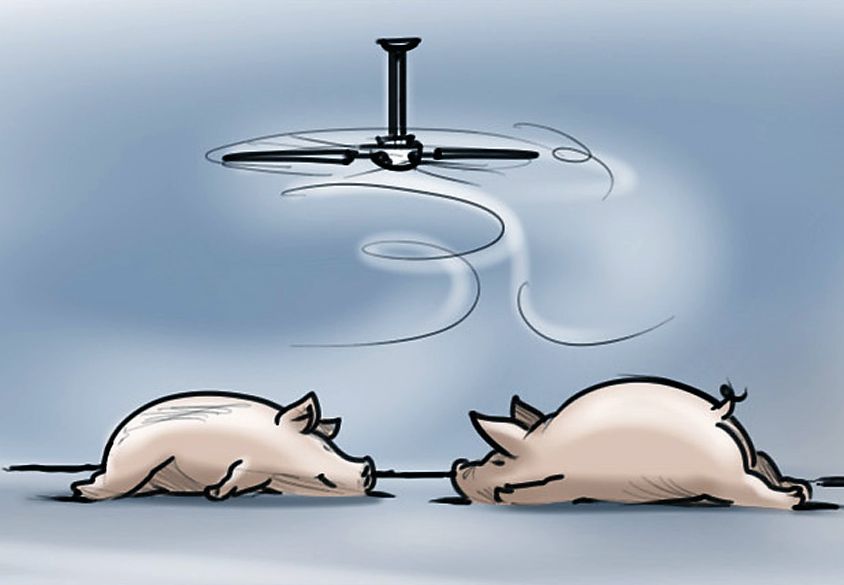How to cool pigs and their environment?

Subject
Review on the current knowledge on cooling pigs and on cooling the environment for pigs kept on farms, relevant for pig welfare
Target audience
Competent Authorities, inspectors and welfare policy workers of the EU Member States
With increasing global temperatures, the risk of heat stress for farm animals is growing. As pigs are not able to sweat and in livestock houses they generally do not have the opportunity to wet themselves, an ambient temperature above the upper critical temperature leads to reduced welfare and performance.
In this review, technologies are described on cooling the pig - sprinkler/shower, floor cooling, fans for air circulation - and on cooling the environment - heat exchanger, fog/mist, cooling pads, air conditioner, underground tubes, underfloor air inlet) for pigs kept on farms.
Validity
Although temperature differences between countries during summer are large, the information and recommendations are valid for all European pig farms. There are not many legal requirements included in the respective EU Welfare Directives on indoor climate in pig houses, although some countries have more detailed rules. This implicates that inspectors need both animal based and environment based indicators to assess whether pigs experience heat stress and to enforce these open formulated legislative requirements by applying cooling technologies.
Upper critical temperature
Theoretically, heat stress starts when the ambient temperature exceeds the upper critical temperature of the thermoneutral zone. Above this temperature, pigs will actively increase heat loss to maintain their core body temperature. It should be noted that also between the upper limit of the comfort zone and upper critical temperature pigs already make adaptations to increase heat loss, but these changes do not affect heat production. Active changes in pigs to increase heat loss are physiological, e.g., an increase in respiration rate. They may also include behavioural adaptations, e.g., lying on slatted floor instead of on an insulated solid floor. The upper critcal temperature depends on age (body weight) and stage of production: when it is not exceeded it is both beneficial for animal welfare as for profitability.
Introphoto: Thermoregulation (©WUR)
